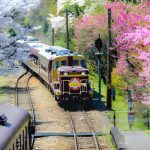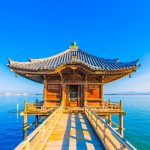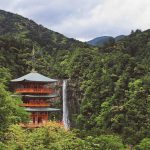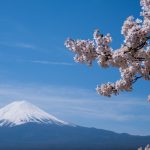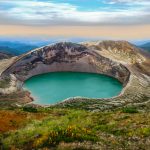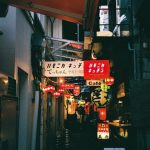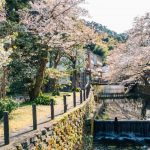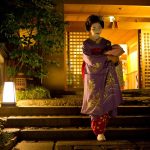Many visitors think of Japan as a country of crazy technology amongst vibrant traditional culture. They think anime, ramen restaurants and cute mascots, but what most people don’t know is that the country is actually covered in over 70% of forests and mountains.
It’s a nature enthusiast’s dream!
Hiking is one of the most popular activities for Japanese residents to do. Just like how people enjoy escaping to the ocean for a getaway, the locals like to plan trips deep in forests and mountainous areas to enjoy fresh air and quiet.

Connecting with nature is such a national pastime that they even have a word to describe the experience: shinrin-yoku. This word translates to ‘forest bath’. Essentially, it’s when you immerse yourself into nature and connect with it deeply through almost all of your senses. This experience is meant to promote both physical and mental restorations for your body.

PS: If you’re interested in learning about more beautiful Japanese words and expressions, head over to this article. We’ve compiled some of the best ones there.
The most popular hike in the country would definitely be up Mount Fuji which can be accessed as a day trip from Tokyo. However that is definitely not the only hike you can do, even if you’re pressed for time.
From the gorgeous land of rolling hills of the northern island of Hokkaido to the subtropical climate of south-western Okinawa, there are plenty of hikes to participate in. Whether you’re after one-day casual hikes, dawn to dusk challenging hikes, or three day adventurous hikes, you’ll be able to find one where you are.
Hiking in Japan – Few Tips
What To Pack?

Pack lightly, but make sure you have the essentials such as food and drinks. The Japanese enjoy loading up on these items as a reward for their hiking efforts. A quick stop into a convenient store before you head out is the perfect solution! From candy to onigiri, cans of beer and sake; purchase to your heart’s content and you won’t be disappointed in the end.
Pack Your Rubbish With You
Most people who have visited Japan will know that trash cans are almost non-existent on the streets. You can expect the same for the hiking trails. If you do have any trash after taking a break, pack it with you and dispose of it after your adventures.
Do Proper Research

You may need to take multiple trains to get to the beginning of the hike, or it may be a short walk from the station to actually start the hike.
Some of the more popular trails actually offer luggage services where you drop off your luggage and they will transport it to the end of the trail before you arrive. Some trails may be in much more remote areas where the last train or bus back into the city is earlier than you imagine.
Prepare yourself!
Wear Modest Hiking Clothing
In many western countries, it is perfectly normal to throw on a pair of shorts and singlet or tee to go hiking. However, in Japan you will notice that they tend to deck themselves out in state-of-the-art long sleeves, hats, neck towels, long pants, and hiking boots.
Whilst you would be forgiven for not equipping yourself with all of these items, wearing skin-exposing clothing whilst hiking may earn you some strange stares.
Best Seasons to Hike in Japan

In a country where the four seasons are as different as day and night to each other, we highly recommend the following tips to make your experience as enjoyable as possible!
Autumn is the best season to hike in Japan. The summers are extraordinarily hot and muggy, making being outdoors highly unpleasant for some. The winters could almost be described as arctic, especially in the northern regions! The springs are generally reserved for cherry blossom viewing, and there is often residual chill from the winter season.
However, if you are traveling in summer or spring, schedule a hike if you’re keen because you’ll probably end up enjoying it anyway. We strongly suggest not attempting to hike during winter as the icy cold conditions could end up dangerous.
The Best Hiking Trails In Japan
Best hikes around Tokyo
Mount Takao

Mount Takao is easily one of the most popular and leisurely hikes around Tokyo. It can be accessed in less than an hour from central Tokyo, and it’s generally classified as ‘easy’ which means the elderly and kids can also participate.
Mount Takao offers various trails that lead up to its peak and there is also a cable car you can take. You will need to travel through Yakuoin temple grounds before the end of the hike.
Difficulty: Easy – Medium
How To Get There: From Shinjuku Station, take the train to Takao Station, and transfer to the Keio line to alight at Takaosanguchi Station. The total trip will take roughly 45 minutes.
Best Time To Hike: It’s generally a good hike throughout the year, although it really comes to life during cherry blossom season (March-April), and the koyo season (October-November).
Tips: Note that because of its close proximity, it’s extremely popular on the weekends! It’s especially popular during public holidays as well. If you’re unfazed by crowds, they often host festivals at this site with food stalls and entertainment during the holiday seasons. If your trip overlaps with these times, it might be fun to check out!
Mount Fuji
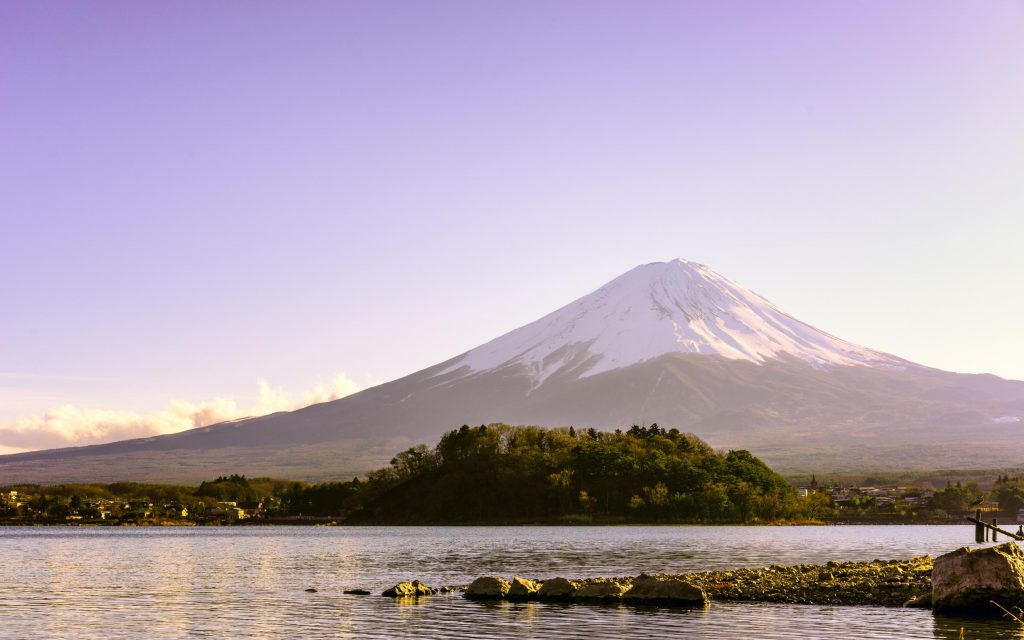
This list would not be complete without Mount Fuji on the list. Arguably one of the most famous mountains in the world, Mount Fuji is a magnet for those seeking a once-in-a-lifetime experience. Its beauty is out of this world – it simply cannot be described. Seeing it for the first time has rendered some people speechless.
The actual hike up Mount Fuji, however, is no joke. It’s actually Japan’s tallest mountain. Hundreds of thousands of people embark on the hike each year so it’s popular and do-able, but also difficult.

During the peak season of hiking, there are hiking facilities open along the way. Outside of this season, only a few open. It is dangerous to embark on the hike outside of the main season unless you have proper expedition experience.
Difficulty: Hard
How To Get There: From Shinjuku, take the bus to the Subaru Fifth Station, arriving in the early afternoon. Hike up to the mountain huts, rest for the night, and wake up early the next morning to ascend towards the summit for the sunrise.
Best Time to Hike: The peak hiking period is from July to August. This is because whilst the rest of Tokyo might be sweltering in the heat, the high altitude of the mountain makes it much cooler.
Tips: If you have access to walking sticks, it might be a useful tool to assist with the hike. If you’re planning to do this hike, try and book a spot in the mountain huts as soon as possible as they do get booked out quite early on.
If you want to admire Mt Fuji, feel free to also read this bog post: Mount Fuji Viewpoints.
And if you are looking for more hikes around Tokyo, you can also check out Chichibu or Okutama.
Best hikes around Kyoto
Daigoji Temple

Kyoto is known for its delicate simplicity; its cultural beauty; it’s Zen. It would be fitting that the hikes there also embody the incredibly soothing atmosphere and eye-opening beauty.
Daigoji temple is one such hike. Daigoji is actually one of the most prominent temples in the southern Kyoto region. The temple itself sits at the base of the mountain. The original temple grounds, however, are located at the peak.
The general crowd tends to visit the temple itself only, but if you’re a keen bean, we recommend the climb. It takes an hour to complete the steep climb. The view at the top is an incredible mix of forested mountainside and surrounding towns.
Difficulty: Medium
How To Get There: From Kyoto Station, take the JR train to Yamashina Station. Transfer to the Tozai subway station and alight at Daigo Station. It is a 15-minute walk from there.
It will take you roughly 30-minutes in total via train and foot to get to the temple.
Once you’ve entered the temple, you can access the trailhead at the back of the temple grounds.
Best Time to Hike: It is an absolutely beautiful hike during the midst of the cherry blossom season around March-April and the autumn koyo season around October-November.
Tips: Don’t just head there for the hike! We recommend exploring the temple grounds either before or after as it’s quite beautiful. It does tend to get crowded so head there earlier in the day if you can.
Fushimi Inari Shrine
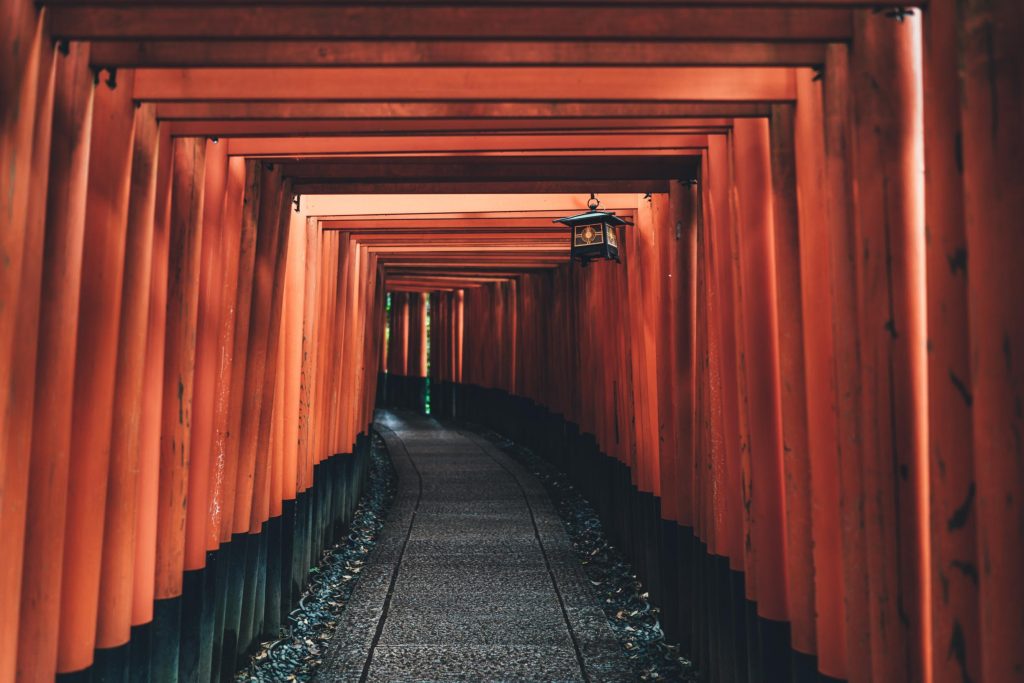
This place should require no introduction. It is one of the most recognisable sites in the world. The bright vermillion red torii gates which create an intricate trail across the grounds is an absolute must-have photo for every visitor in Japan.
Many people will be happy to just hop in and out of the gates for a quick pic. The hike option towards the top of the shrine is a great option of exploration as well.
The entire hike is covered by the torii gates which is a unique experience! It will take roughly 2-3 hours there and back. Along the way, you can stop by at various shrines to pay your respects.
Difficulty: Easy
How To Get There: From Kyoto station, take the JR Nara line to JR Inari Station. It is located just outside the station.
Best Time to Hike: This hike is a leisurely and enjoyable hike throughout the year. The heat in summer might deter some people though!
Tips: If you’re not keen for an entire 2-3-hour hike, you can stop at the Yotsutsuji intersection. This intersection is located halfway up, after roughly 45 minutes of hiking. There is an area to rest and take in the views from there.
For more places to visit in Kyoto, check out our list of the most Instagrammable places in Kyoto.
Kurama to Kibune

Kurama is a small town in Kyoto that’s most famous for its temple, Kurama-dera, and its hot springs. For a convenient hot spring experience that’s outside of the main city enough to feel like you’re away from the hustle and bustle, this is the perfect location.
The hike begins from the back of the temple’s main building, and continues for an hour. The trail is sometimes quite steep. It will lead you past various structures as well as through beautiful forested paths.
Difficulty: Easy
How To Get There: From Demachi-Yanagi Station, take the Eizan Kurama Line to Kurama Station and alight.
Best Time to Hike: This is a great one to do all-year-round.
Tips: Note that it will take roughly 30-45 minutes to walk up to the temple. From the back of the temple, the actual hike will take an hour.
Best hikes around Osaka
Minoo Park
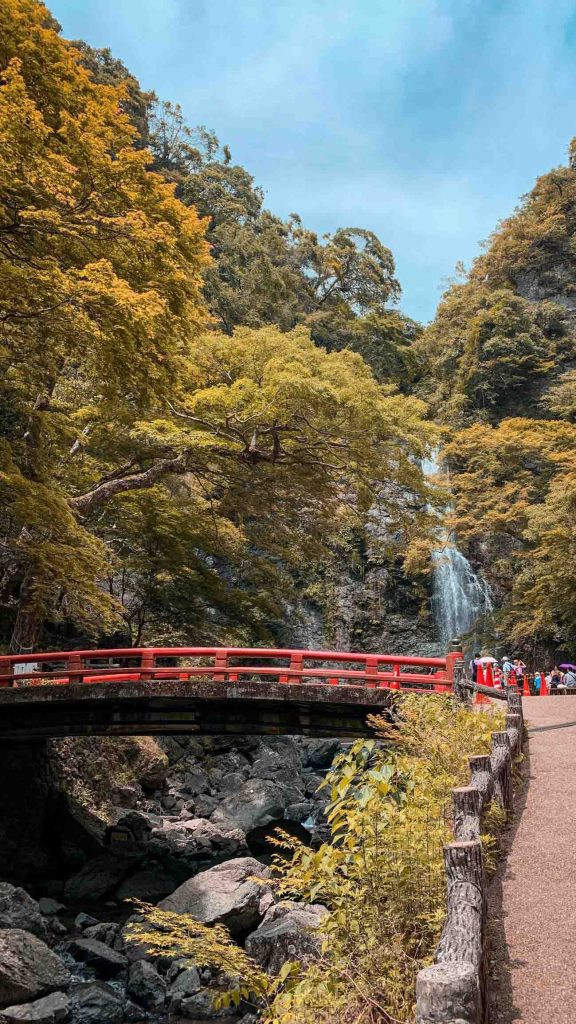
This beautiful park is located just north of Osaka but it may as well be worlds away. The forested valley is home to one of the best places to witness the autumn leaves. Due to its close proximity to the station, it’s quite a popular day trip for locals to escape the urban city.
The hike here is an easy one that extends along the valley with only a slight ascent. Most hikes end with a view but this hike ends with a resting area in front of the beautiful Minoo Waterfall.
Difficulty: Easy
How To Get There: From Hankyu Umeda Station, take the Hankyu Takarazuka line to Ishibashi station and change to the Hankyu Minoo line. The entire trip will take around 25-minutes.
Best Time to Hike: The fall season is absolutely stunning here. It is usually at its most vibrant around November.
Tips: If you are hiking during the autumn season, stop by at the food stalls at the entrance of the park to taste some momiji tempura – maple leaves deep fried in batter!
Mount Yoshino

The wooded temple in the Nara prefecture is one of the most picturesque hikes you can take. The entire mountainside is covered in cherry blossoms during the spring season so it’s a massive bonus for those undertaking the hike during that period.
The hike itself is technically more of a ‘walk’. It’s easy enough so that children and the elderly are also able to participate without worry. The views are insanely beautiful so you might find that it will take longer to complete as you’re constantly stopping for photos.
Difficulty: Easy
How To Get There: From Osaka Abenobashi Station, take the train to Yoshino station. It will take 1.5 hours.
Best Time to Hike: It’s accessible all-year-round, but for the best experience, the cherry blossom season is the way to go.
Tips: What most people do is take the cable car from the lower grounds to the top of the mountain and then make their way slowly down to the station. There are usually stalls selling food and souvenirs along the way.
More tips and tricks to visit Japan here: Japan Travel Blog.
Yamanobe-no-michi Trail

This trail through various towns is actually along an ancient road – possibly one of the oldest roads in the Nara Prefecture!
If you’re a fan of crossing paths with beautiful landscapes, shrines and temples, and unique housing and sights of nature, this is a great trail.
Difficulty: Easy (mostly flat)
How To Get There: The trail runs parallel to the train JR line between Nara and Sakurai. The best start and stop points are either Isonokami Shrine (near Tenri station) or Omiwa Shrine (near Miwa station).
Isonokami Shrine can be accessed via a 30-40-minute walk from Tenri station. From Nara station, take the JR Sakurai line to Tenri, which is only a 15-minute train ride away.
Omiwa Shrine can be accessed via a 10-minute walk from Miwa Station. From Nara station, take the JR Nara line towards Sakurai station and alight at Miwa station.
Best Time to Hike: This trail can be accessed all-year-round. It may get a little hot in summer though as there is mostly no shade covering the paths.
Tips: Whilst the most popular part of this trail is between the two aforementioned shrines, you can hop on and off at any station in between to do a shorter part of the trail.
Best hikes in Hokkaido
Daisetsuzan

Daisetsuzan is Hokkaido’s largest national park. Because of its size, it’s actually home to a variety of types of hikes you can experience. From day trips to hikes that could take up to a week, there’s one for everyone.
The most popular one-day hike would be from Asahidake to Kurodake. This hike will take roughly 7-8 hours, so it’s not for the faint-hearted! This trail will let you enjoy picturesque views of the famous volcanic crater as well as cross paths with unique mountainous flora.
Difficulty: Medium – Difficult
How To Get There: From Asahikawa Station, take the bus that runs to Asahidake-Onsen. It will take just over 1.5 hours. We recommend driving as road access is quite easy and there is ample parking.
Best Time to Hike: Because of its northern location, the best time to go would be during June-August, when it’s super warm elsewhere but the conditions are perfect at Daisetsuzan.
Tips: Note that the entire Daisetsuzan area is a habitat for brown bears. Make sure you gear up appropriately beforehand (e.g., bells).
Noboribetsu Hell Valley (Jigokudani)
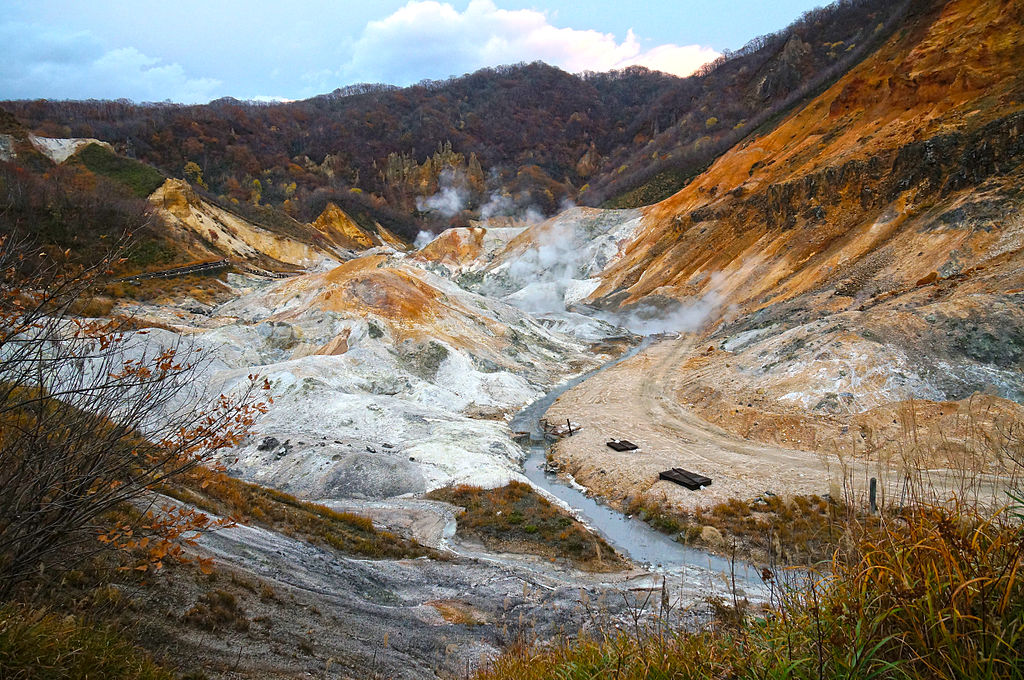
Don’t let the aforementioned hike scare you. If you’re into chill, leisurely walks, Jigokudani located near the Noboribetsu onsen town is perfect.
The walking trails take you through the hills above Noboribetsu, with beautiful foliage to admire and views to take in.
These walking trails are super easy and can be enjoyed by families and alike.
Read more about Noboribetsu Onsen here >>
Difficulty: Easy
How To Get There: From Noboribetsu bus terminal, it is just a 5-minute walk away.
Best Time to Hike: During the fall season, the colours really come alive. The koyo is absolutely stunning alongside the walking trails!
Tips: You might spend more time than anticipated here. There is a foot bath (aiyu) along the way where you can sit and relax.
Best hikes in Kyushu
Mount Aso

Mount Aso is an active volcano in Kyushu. The last time it actually erupted was in 2016, however, there is still volcanic activity happening in and around there.
There are multiple hiking trails surrounding this mountain. They are mostly located near Komezuka, which is the area around the craters and peaks of the mountain.
Difficulty: Easy – Difficult
How To Get There: From JR Aso Station, take the bus to Nakadake Crater. It will take 30-40 minutes. From there, you will need to walk to the crater itself which will take 30-minutes. Alternatively, take a shuttle bus. We highly recommend driving as there are only a few buses every hour, and you can drive into the parking lot next to the crater.
Best Time to Hike: Besides winter, these hikes can generally be enjoyed throughout most of the year.
Tips: Make sure you check the volcano’s current state before visiting.
Yakushima

The gorgeous island of Yakushima is like something out of a movie. It’s located south of Kyushu, just off the coast of Kagoshima prefecture. Whilst it does not have many mountains, it’s densely forested, making all trails super magical.
Because of its off-coast location, we recommend staying overnight at one of the accommodations on the island.
If you’re looking for accommodation offers, we highly recommend the Sankara Hotel & Spa Yakushima for a luxurious experience. Alternatively, you can book an affordable room at the Yakunoyado Taguchi guesthouse for a pleasant homey experience.
Difficulty: Easy – Difficult
How To Get There: You can catch the high-speed boat from Kagoshima port to Yakushima, a car ferry from Kagoshima New Port to Yakushima, or fly between Kagoshima and Yakushima.
Best Time to Hike: It is generally accessible to the public throughout the year. Although it does not get as cold as the northern part of Japan during winter, it still snows at the higher altitude parts of the island. We recommend either spring or autumn.
Tips: Its subtropical climate means that it attracts quite a bit of rainfall throughout the year, so remember to pack weatherproof clothing! We also recommend hiring a car to travel around the island. There is almost no traffic and public transport is few and far between.
Best Hike in Shikoku: Mount Tsurugi

Mount Tsurugi is located within the remote Iya Valley region of Shikoku. Visitors to this area can expect luscious mountain scenery and generally fantastic weather. The mountain is the second tallest in Shikoku and one of the top 100 mountains in Japan!
The hike will take you to the peak of the mountain, where you can take in various viewpoints, explore a shrine, and traditional mountain huts.
More details about Iya Valley here >>
Difficulty: Medium
How To Get There: We recommend hiring a rental car to visit this mountain as otherwise you will need to rely on interconnecting public transport to get to the base.
Take a bus from Awa Ikeda Station to Kubo station. Transfer to a bus for Tsurugisan and alight at the last stop. Overall the trip will take under 3 hours one-way.
Best Time to Hike: Due to its remote location, we recommend doing this hike in Summer or Autumn only.
Tips: The hike from the base near the lower chairlift station to the peak will take around 4-hours round-trip. However, most people will just take the chairlift to the summit, hike the additional 30-minutes to the peak, and then make their way back down.
Best hikes in Tohoku
Oirase Stream

This is one of the most popular hiking trails to visit during the koyo season due to its explosion of fall colours alongside the beautiful stream.
The trail that most people follow to make the most of the sights and attractions here is between Nenokuchi and Ishigedo (trail points). The trail is around 9km long and will take around 2.5 hours one-way.
Difficulty: Easy
How To Get There: There are multiple bus stops to and between Nenokuchi and Ishigedo where you can begin and end your hike.
From Towadako bus stop, take the bus to Aomori City or Hachinohe. Either of these buses will stop along the hiking trail and you can alight where you like.
Best Time to Hike: Outside of winter, you can walk this hike at any time. The best time would be between October and early November, as this is when the fall leaves are at their peak.
Tips: Note that the public buses do not run between early November and mid-April. You will need to rent a car during this time.
Mount Hakkoda

If you’re visiting Oirase Stream, we highly recommend also squeezing in a visit to Mount Hakkoda. This stunning mountain boasts luscious greenery and expansive views throughout the year.
You can take a ropeway that leads to its summit. From there, there are multiple trails you can attempt that take you to various peaks. Some will lead you down the mountain there you can relax in a sauna afterwards.
Difficulty: Easy – Difficult
How To Get There: From Aomori or Shin-Aomori station, take the JR buses to Lake Towada and hop off at Hakkoda Ropeway.
Best Time to Hike: These hiking trails are great to explore anytime outside of winter. Autumn will yield the best views.
Tips: If you’d like to visit a hot spring right after, take the trail which leads down the mountain. You will pass through Kenshitai through to Sukayu Onsen.
Best hikes in Okinawa
Hiji Waterfall

There are plenty of beautiful waterfalls in Japan and Hiji Waterfall in Okinawa is definitely up there. To get to this stunning sight, you will need to hike along a dense forest trail. The trail will take approximately 40-minutes to get to the destination.
Along the way, stop and appreciate the beauty. One of the highlights of the trail is definitely the stunning suspension bridge that passes over the valley below.
Difficulty: Medium
How To Get There: From Naha, take the bus number 111 or 117 to Nago bus terminal. Transfer to bus 67 at Nago towards Okuma Beach Iriguchi. You will need to talk another 20-25 minutes to get to the trailhead where the hike begins.
Because of this level of difficulty, we recommend hiring a car to get around.
Best Time to Hike: Okinawa enjoys sub-tropical climate all-year-round, so it’s generally ok to hike this trail at any time.
Tips: If you’re keen for an overnight trip, there is actually a campground right at the trailhead. It offers picnic tables and wooden decks to set up tents. It costs 2000 yen per tent site per night. Find out more information here: https://hiji.yuiyui-k.jp
Iriomote Island

Remote provides visitors with a unique experience of Japanese jungles. There are many fun activities to participate in here, most notable snorkelling, visiting the various beaches, kayaking, and fishing.
There are various hiking trails on this island that are experienced as part of a tour with other activities. For example, you can book a tour through the Urauchi River which also includes a 45-minute hike to some waterfalls.
Difficulty: Medium-Difficult
How To Get There: From Ishigaki island, you can book a high speed ferry or car ferry to Ohara Port. Book your ride through this website.
Best Time to Hike: You can enjoy these hikes all-year-round.
One of our greatest joys is bringing you information about attractions in Japan that you otherwise might have never discovered. Hiking in Japan is a favourite pastime of many locals and expats. Round off your ramen-eating expedition with a few hikes to keep those post-holiday kilos off!
Most visitors who squeeze in a hike or two during their visit will fall in love with Japan’s luscious forests, alpine mountains and beautiful scenery. Whether you’re an avid adventurous hiker or just someone who wants to explore the greener side of Japan, there’s a hike listed here for you.




